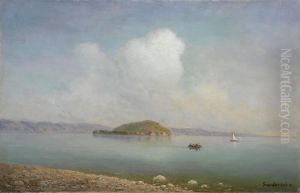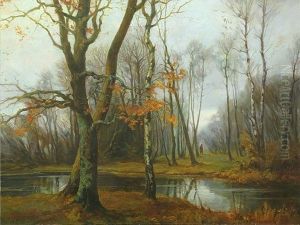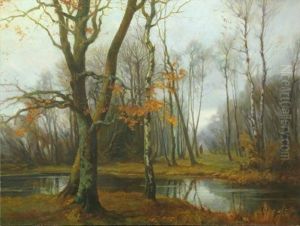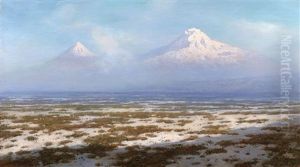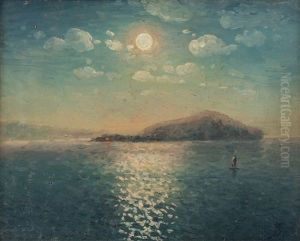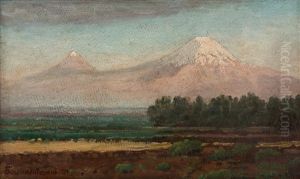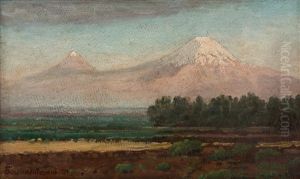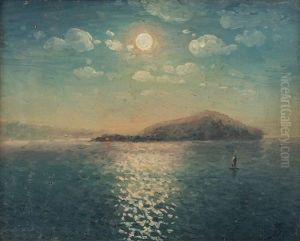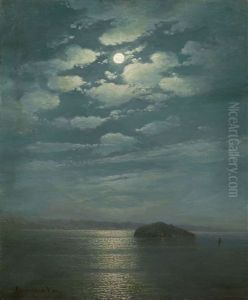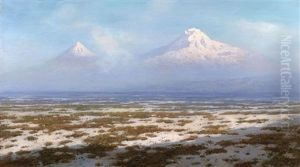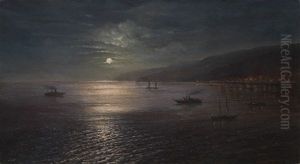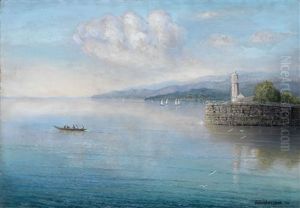Gevorg Bashindzhagyan Paintings
Gevorg Bashindzhagyan was an Armenian landscape painter and a key figure in the development of Armenian national art at the turn of the 20th century. He was born on July 16, 1857, in Shushi, a city in the then Russian Empire, which is now part of the disputed region of Nagorno-Karabakh. His formative years were spent in a culturally rich environment that was undergoing a national awakening, which influenced his later work.
Bashindzhagyan studied at the Moscow School of Painting, Sculpture, and Architecture, one of the most progressive art schools in Russia at the time. There, he was introduced to the techniques of European academic painting, which he would later adapt to depict the landscapes of his homeland. After his studies, he returned to the Caucasus and settled in Tiflis (present-day Tbilisi, Georgia), which was a cultural hub for Armenians in the Russian Empire.
Throughout his career, Bashindzhagyan was known for his evocative landscapes that captured the spirit and beauty of Armenian nature. He painted a wide range of subjects, from the peaks of Mount Ararat to the monasteries and rural villages of the region. His work is characterized by a masterful use of color and light, often using impressionistic touches to convey the unique atmosphere of the locations he depicted.
Bashindzhagyan's contribution to Armenian art was not limited to his own creations. He was a dedicated teacher and mentor to a younger generation of artists, and he played a significant role in the establishment of the first art school in Tiflis. His efforts helped lay the foundation for the development of a distinct national art movement in Armenia.
Gevorg Bashindzhagyan passed away on April 4, 1925, in Tbilisi. His legacy continues to be celebrated in Armenia and among the Armenian diaspora. His works are preserved in many art museums and galleries in Armenia, including the National Gallery of Armenia in Yerevan. Bashindzhagyan is remembered as a pioneer who captured the essence of the Armenian landscape and spirit, and as an influential figure in the cultural history of the Armenian people.

